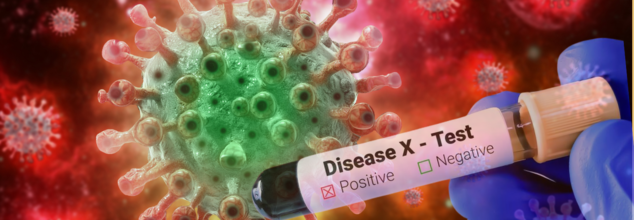
Do Anti-Aging Diets Reverse Your Aging? Find Out Here
The markets are filled with anti-aging materials, whether they are face creams, masks, hair products, supplements etc. The prospect of growing old scares many people, who then look for things that can help them show their age less. Things like Botox and minor plastic surgeries are widely done by people.
Another trend that has picked up is the ‘Anti-Aging Diet’. Many people, who do not wish to go the medical care route to anti-aging, focus on their diets to promote healthy and slow aging.
In the 2021 Edition of the Science Journal, researchers explained that for years, many scientists have observed that by simply reducing calorie intake can extend the lifespan and delay the onset of age-related diseases in laboratory animals.
Caloric restriction has been one of the key components of the anti-aging diet research. Recently more diets have emerged that urge people to eat healthier and in a restrictive manner. These new diets don't just mean eating less overall; they look at specific foods and when we eat them to see if it changes how we age.
These newer ways of eating include things like only eating during certain hours of the day (intermittent fasting) and special low-calorie meals that act like fasting (fasting-mimicking diets). Diets very low in carbs (ketogenic diets) and only eating within a set time each day (time-restricted feeding) are also being studied. Scientists are also looking at eating less protein or certain parts of protein (amino acids) to see if it affects how long and how well we live. Even though some of these diets are popular now, we still don't know for sure if they work for people outside of labs.
Do These Diets Work And How?
Studies on these different "anti-aging" diets in lab animals suggest they might work in similar ways inside our bodies. This means that different ways of eating might change some basic things in our bodies that affect how we age. These things seem to be the same in many different living creatures, which means they are probably important for aging.
Early studies on eating less showed that if animals ate less food but still got all their important nutrients, they not only lived longer but also didn't get many of the diseases that come with old age and stayed healthier for longer. Now, scientists are trying to figure out if these newer diets can do the same things and how they might work inside us. For example, some diets might change how our cells sense food and grow, which can affect important parts of our cells that are involved in aging.
What Are Some Changes One Should Make Slowing Down Your Aging?
Even though there is still a lot to learning about "anti-aging" diets in people and there's no proven way to stop aging with diet yet, the research gives us some interesting ideas for living healthier. It's important to be careful with this information and talk to a doctor before making big changes to your diet.
Eating a balanced diet with real, unprocessed foods is a good first step. Not eating too many calories but still getting all the nutrients we need is also important, as shown by many years of research. Some early evidence suggests that having periods of not eating, like with intermittent fasting or time-restricted feeding, might be good for our body's metabolism. Also, paying attention to how much protein we eat and what kind might be important, but we need more research on people.
It's important to know the difference between diets that help you lose weight and those that might actually slow down aging. While being a healthy weight is good for overall health and can help you live longer, we still need to do more research to see if specific diets can really change how we age.

(Credit-Canva)
'I Felt Burning Sensation All Over My Skin', Woman Shares Details Of How Black Mold Affected Her Health – 5 Signs To Watch For
Home health is an important aspect of healthy living, right alongside healthy eating, and fitness etc. You may have hidden illnesses lurking around the corners of your home, these may seem harmless, but their effect is immediate and intense at times. One such danger that your home may be carrying is black mold. Black mold is a type of fungus that can trigger your immune system. On a milder side, it can cause sneezing, coughing, eye irritation and congestion in your airways. On the other hand, it can worsen asthma symptoms, and black mold allergies cannot be cured, however the symptoms can be treated.
Dealing with mold inside a home is unpleasant, as it can appear in various locations such as walls and ceilings. Black mold is a type of microscopic fungus that has a dark green or black appearance and can have negative consequences for one's health. Autumn Clayman claimed to have experienced several physical symptoms due to black mold after living in an apartment with it. She detailed these experiences in a video shared on TikTok.
Burning Sensations on Skin
Autumn described her first symptom as a burning feeling all over her skin, particularly on her face and neck. She stated that upon entering her apartment, her neck and face would immediately feel like they were burning.
In her TikTok post, she included a picture showing red marks resembling burns on her lower face near her jawline and on her neck. She added that this burning sensation started "immediately" after she entered her apartment and gradually worsened over time.
The Centers of Disease Control and Prevention (CDC) explains that black mold allergy can cause itchiness and redness in eyes and skin
Development of Eczema
Autumn developed eczema, which initially appeared as a "little speck" on her neck before quickly spreading across her body, including her arms and legs. She noticed small eczema "bumps" all over her body that would then group together into clusters.
In a 2016 study published in Allergy and Asthma Proceedings, researchers aimed to find out the effects of ethnicity and environmental exposure on eczema. They found that factors inside the home, like mold, water damage, or using a humidifier, increased the risk of eczema in non-Hispanic white children even if their parents didn't have allergies.
Allergies and Congestion
Autumn also reported feeling more congested than ever before. Although she had previous sinus issues, she stated that she had difficulty breathing most of the time while inside her apartment.
The Cleveland Clinic explains that exposure to black mold can trigger shortness of breath, nasal congestion etc.
Irritation of the Eyes
The fourth symptom Autumn attributed to black mold exposure was burning, itchy eyes. She claimed that her eyes were constantly irritated.
Extreme Fatigue
Autumn shared that despite getting sufficient sleep, she constantly felt exhausted and tired. She also recalled often feeling "depressed" and "drained," but initially thought this was just due to stress.
WebMD explains that exposure to black mold can not only give you joint and muscle pain, headaches, night sweats, as well as the tiredness even after resting.
After getting her apartment completely checked, she concluded that her apartment was the cause of her health problems because she had "never experienced health issues like this before," her stress levels were not unusually high, and she had "never dealt with eczema before."
How Does Black Mold Develop?
Mould and dampness are caused by excessive moisture. Therefore, if these issues are present, it is advised to identify the source of the excess moisture in the home to facilitate repairs or take steps to reduce humidity. NHS Inform advises that while a professional may be needed for extensive mold removal, small amounts might be removable by the individual.

Pink Noise Can Help You Sleep Better—Know Everything About It
Move over white noise—pink noise is the latest trend gaining popularity among people seeking better sleep and deeper relaxation. This softer, more soothing sound is fast becoming a go-to tool, alongside brown and green noise, in what some call a 'rainbow of relaxation.' Each of these coloured sounds is believed to influence sleep, focus, and overall calm—but is there any science to support the claims?
What Is Pink Noise?
Though the research is still in its early stages, that hasn’t stopped people from spending hours listening to these sounds on YouTube or through meditation apps that now offer curated colour-noise playlists under paid subscriptions.
To understand pink noise, it's helpful to first look at white noise — the most well-known of the group. White noise resembles the static heard on a television or radio and is defined by sound engineers as containing equal volume across all frequencies detectable by the human ear. It gets its name from white light, which contains all visible colour wavelengths.
However, white noise’s high frequencies can be harsh. That’s where pink noise comes in — it reduces the intensity of higher frequencies, producing a softer, lower-pitched sound similar to rain or ocean waves. Brown noise goes even deeper, offering a richer rumble that many find soothing.
While pink, white, and brown noise have clear definitions in audio engineering, other colour noises—like green or blue—are newer and more loosely defined.
What Does Research Say?
Though still limited, there’s some emerging science behind colour noises. A recent review of small studies found that both white and pink noise may offer minor benefits to people with attention-deficit/hyperactivity disorder (ADHD). According to Joel Nigg, an ADHD researcher at Oregon Health & Science University, these noises may stimulate the brain without offering actual information—which helps prevent distraction.
White noise has also been used in tinnitus treatment—helping mask the ringing or buzzing in the ears. Meanwhile, scientists at Northwestern University are exploring how short bursts of pink noise might boost slow-wave brain activity during deep sleep. Preliminary studies suggest that these pink noise pulses could enhance memory and promote relaxation.
Dr. Roneil Malkani, a neurology professor at Northwestern University Feinberg School of Medicine, explains that pink noise closely mirrors the natural frequency distribution of brain waves seen during slow-wave sleep. This similarity could help explain its calming effect. If the research holds up, it may lead to devices that use personalised pink noise to improve memory or sleep quality. However, Dr. Malkani cautions that “there’s still a lot of work we have to do.”
Is It Safe to Try?
If colour noises feel relaxing or help block distractions, they can be a helpful tool. Just be mindful of volume. “Keep it quiet to avoid hearing damage and give your ears regular breaks,” Nigg advises. As the trend grows, pink noise may prove to be more than just a fad, offering a gentle, non-invasive way to improve rest and well-being.
ALSO READ: What Is Moon Breathing? How Does It Promote Sleep?

Disease X Is A Deadlier Threat Than COVID: 4 Viruses That Could Spark The Next Pandemic
When COVID-19 shut the world down in 2020, it also raised a worldwide alarm—pandemics of the future are not a question of if, but when. Now, British public health officials unveiled a chilling array of possible viral dangers that would cause the next global health crisis, ominously dubbed "Disease X." Four families of viruses have the highest pandemic risk, according to the UK Health Security Agency (UKHSA). These diseases are not yet common household names, but the danger they pose is very real—and possibly more catastrophic than the new coronavirus.
"Disease X" was a term that the World Health Organization (WHO) used to represent a hypothetical, yet undetermined pathogen that might cause an impending epidemic. It was used to recognize the increasing danger of unknown illnesses that may initiate global outbreaks in an era with rapidly growing population densities, climate change, and spillovers from animals to humans.
According to a recent study, the UKHSA examined 24 families of viruses and identified four most likely to instigate the forthcoming pandemic: Paramyxoviridae, Picornaviridae, Coronaviridae, and Orthomyxoviridae. These infections, with the nature they hold and the experience they have generated, can produce widespread diseases as well as death if they aren't kept at bay.
Four High-Risk Viral Families Identified
1. Paramyxoviridae: Measles-like Viruses and Nipah
This family includes the measles virus and the Nipah virus, both capable of causing severe complications. Measles, while vaccine-preventable, is resurging globally due to declining immunization rates. It’s not just a childhood illness; measles can lead to encephalitis (brain swelling), pneumonia, and even permanent disabilities like blindness or hearing loss.
A 2019 Harvard Medical School study revealed that measles can destroy up to 75% of the immune system's memory, leaving people more susceptible to other illnesses. Worse still, if a new measles-like virus were to arise, specialists worry it would be both highly infectious and fatal—particularly among children.
"Nipah virus," on the other hand, is recognized for Southeast Asian outbreaks. Spread from animals, particularly bats, it leads to fever, respiratory distress, and inflammation of the brain with a mortality rate of 40% to 75%.
2. Picornaviridae: Polio-like Disease in Disguise
The enteroviruses within this family are known to cause such diseases as acute flaccid myelitis (AFM)—a paralytic illness similar to polio. AFM usually affects children with sudden muscle weakness and, in extreme cases, permanent paralysis. Although infrequent, its unwieldy outbreaks have put the world's neurologists on notice.
3. Coronaviridae: The Return of a Familiar Foe
This group contains COVID-19 and MERS, the latter still producing sporadic outbreaks with high mortality, chiefly in the Middle East. As the world knows COVID-19 well, as yet undiscovered and new coronaviruses might still appear that are more dangerous or more resilient to current vaccines.
4. Orthomyxoviridae: Influenza's Deadlier Cousins
From avian influenza to seasonal flu, this family has repeatedly demonstrated its pandemic potential. Human bird flu outbreaks have already happened, and scientists caution that even a minor genetic shift may result in more effective human-to-human transmission.
Could the Next Pandemic Be Worse Than COVID-19?
Professor Mark Woolhouse, one of the UK's top infectious disease experts at the University of Edinburgh, warns that a new measles-like virus would be a threat "far worse than COVID-19." While SARS-CoV-2 spared children for the most part from severe illness, a virus in the Paramyxoviridae family could be very infectious, very deadly, and strike younger populations. Lockdowns, Woolhouse says, may not even work to prevent it.
The Coalition for Epidemic Preparedness Innovations (CEPI) and other global health organizations are racing toward a revolutionary objective: developing vaccines in 100 days after a new disease is discovered. That's a stark contrast with the COVID-19 vaccine timeline—Pfizer's took 337 days, and previously, the fastest vaccine ever made (for mumps) took four years.
CEPI plans to construct a library of "prototype vaccines" for 25 known virus families. These would be blueprints, enabling scientists to switch quickly and initiate human trials in record time if Disease X arises.
Nevertheless, the experts contend that even 100 days may prove to be late. A study published recently in The Lancet indicates that had the COVID-19 vaccine been made available within three months of the virus having been sequenced, millions of lives would have been saved.
Are Viral Hemorrhagic Fevers the Overlooked Threat?
Another category of viruses—viral hemorrhagic fevers (VHFs)—also hang over the horizon. Viruses such as Dengue, Ebola, Marburg, Lassa, and Yellow Fever cause massive bleeding, organ failure, and death. While some are geographically localized and rare, others such as Dengue are already global threats in the making.
The clinical manifestations of VHFs vary from fever and malaise to intravascular hemorrhage and organ dysfunction. Most VHFs are zoonotic, spilling over from bats, rodents, and primates. Although there are vaccines available for some (e.g., Yellow Fever), several lack efficient treatments or have poor vaccine coverage.
UKHSA's Dr. Isabel Oliver stresses that "infectious diseases don't respect borders." With a world of rapid travel, shifting climates, and vaccine skepticism, the recipe for a global health catastrophe is already in place.
The UK's "Priority Pathogens" approach is all part of a broader strategy to not only identify threats, but to prepare for them with cutting-edge surveillance, quick vaccine platforms, and international collaboration.
India's recent achievement of developing its first indigenous dengue vaccine marks progress, particularly in middle-income countries. But the question remains: will we be prepared when the true "Disease X" arrives?
The answer is not in panic, but in readiness driven by science, global collaboration, and a sense of urgency based on the lessons of our recent past.
© 2024 Bennett, Coleman & Company Limited

